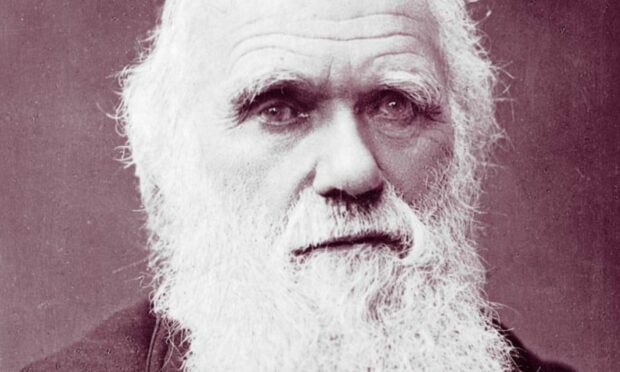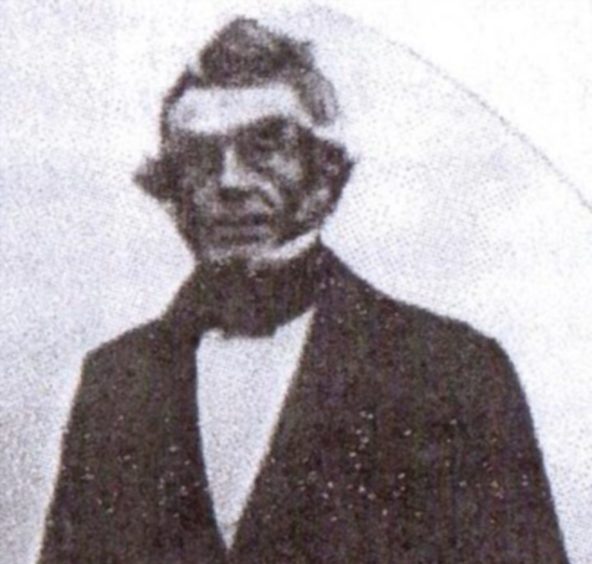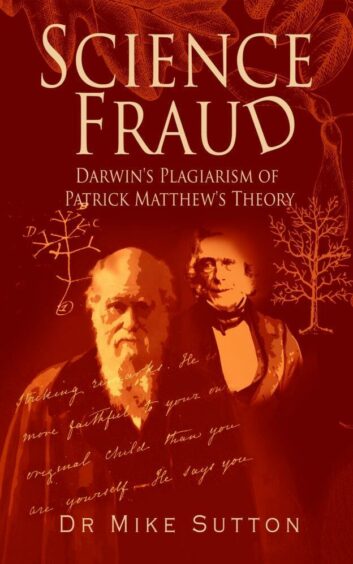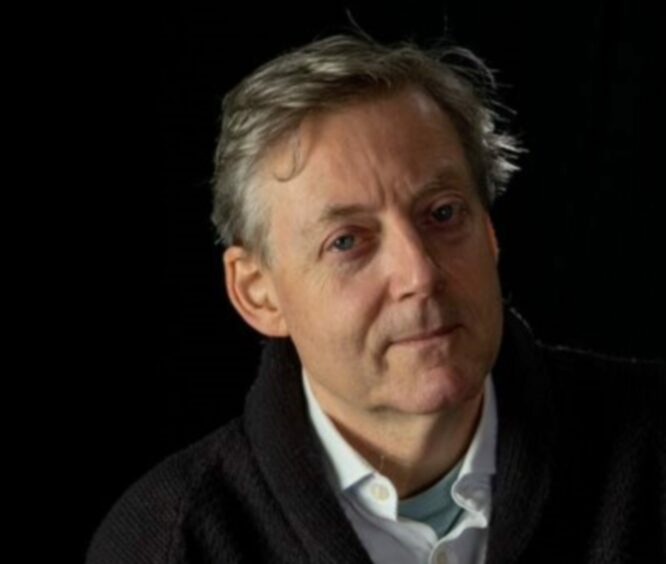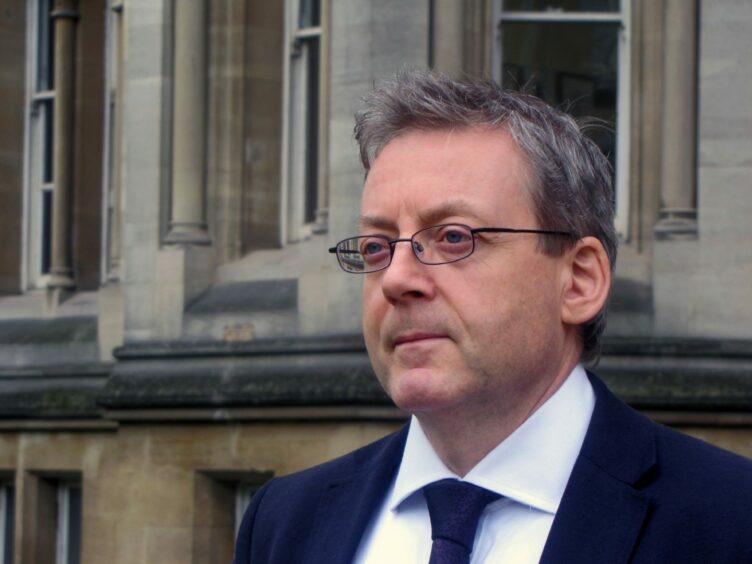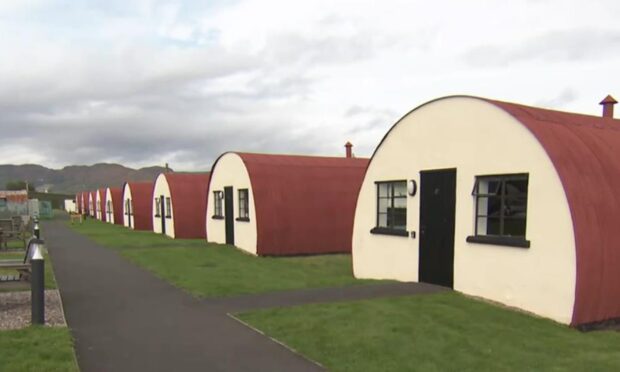When Englishman Charles Darwin published The Origin of Species in November 1859, his theory of evolution by ‘natural selection’ made humans rethink their place in the world.
But was Darwin a fraudster who stole his ideas from Patrick Matthew – a relatively unknown 19th century Perthshire landowner and orchard farmer from the Carse of Gowrie?
When criminologist Dr Mike Sutton used text-mining software to claim in a 2014 e-book that Charles Darwin and Alfred Wallace plagiarised the theory of natural selection from the work of Patrick Matthew, it not surprisingly created great controversy in Darwinist circles.
The turmoil intensified in 2016 when, ahead of a Carse of Gowrie Sustainability Group event at the Hutton Institute, Invergowrie, Dr Sutton told The Courier why he believed a “great injustice” had been done.
Challenging the orthodox view that Darwin was the first to discover the process of natural selection, the criminologist revealed how he had uncovered evidence that Darwin, who always denied plagiarism, must not only have been aware of Matthew’s work from 1831, but borrowed heavily from it.
A number of Darwinist academics challenged Dr Sutton’s findings, with one accusing Dr Sutton of “very poor and lazy research offset by a big aggressive ego”.
A botanist, meanwhile, suggested it was “absurd” to regard Matthew as a “hard done by Scottish hero”.
Release of new book
Six years on, and to coincide with International Darwin Day on February 12, Dr Sutton is launching his new book Science Fraud which tells “the true story of the biggest science fraud in history” and presents further “facts” that Patrick Matthew has been wronged.
Using “Big Data” research, Dr Sutton presents evidence that at least 30 people cited Matthew’s work in published literature before 1858, and that several were known influencers of Darwin’s and Wallace’s work in the field, including naturalists Loudon, Selby and Chambers.
Patrick Matthew, in 1831, originated the complete theory of evolution by natural selection in his book On Naval Timber and Arboriculture, and did so before Charles Darwin and Alfred Wallace claimed to independently replicate it in 1858, says Dr Sutton.
However, “unjustly, and against the Arago convention on priority” – a ruling that gives origination of any science theory to the first to publish – Dr Sutton argues that Matthew has been “illicitly denied his priority” on the grounds he never influenced anyone with his breakthrough.
Challenging perceptions
“Today, Big Data research has uncovered Darwin’s science fraud by plagiarism, revealing evidence which proves beyond all reasonable doubt that he and Alfred Wallace both independently plagiarised the theory of evolution by natural selection from Patrick Matthew,” says Dr Sutton.
“Books have been newly unearthed in the publication record to show that at least 30 people cited Matthew’s work in published literature before 1858 and that several were known influencers of Darwin’s and Wallace’s work in the field.
“Additionally, several people in Darwin’s and Wallace’s social circles were first to be second into print using original terms coined by Matthew in his bombshell breakthrough book.
“This book reveals all the newly unearthed data and essentially explains it, alongside the deplorable treatment of Patrick Matthew, in scholarly historical context.”
Who is Dr Mike Sutton?
Dr Sutton, 62, retired from Nottingham Trent University three years ago as Reader in Criminology.
The award-winning criminologist previously worked for 14 years as a senior researcher in the Policing and Reducing Crime Unit in the Home Office in London.
It was “quite by chance”, however, that he became interested in the history of the discovery of natural selection.
In the winter of 2013, he had been experimenting with various ways to search the millions of newly scanned books and other documents in the Google Books Library Project.
He was doing that to try to check the veracity of long-accepted claims regarding the origination of words, terms and their associated concepts.
For example, he discovered that, contrary to opinion, Dawkins never coined the phrase or originated the concept of the “selfish gene”.
“In desperation I turned to Charles Darwin for reassurance as truly the originator of the term and concept of natural selection,” he says.
He was shocked to discover, however, that Patrick Matthew’s published research on natural selection being the origin of the species, predated Darwin.
‘Shocking’ revelation
Most significantly of all, he made his own “literally shocking” original discovery that contrary to prior knowledge it was read and cited by Darwin’s friends and influencers before Darwin replicated the idea and referred to it many times as “my theory”.
“I looked up natural selection and found Darwin didn’t coin the phrase first,” he explains.
“I put in the phrase natural process of selection, and up comes Patrick Matthew.
“I’d never heard of him. I did a little bit of reading around him, who he was. People said he coined the phrase natural selection phrase, but that no one read it.
“But then I discovered the second person to use the phrase ‘natural process of selection’ was Chambers who had written this book called Vestiges of the Natural History of Creation which hugely influenced Darwin and Wallace. You can imagine how the alarm bells started ringing then.
“The next thing was did Chambers ever actually cite Matthew?
“I looked that up and found that he did. He cited his book on naval timber and he cited his second book emigration fields, which means he read him.
“This meant the man who influenced Darwin read Matthew and used his terms, so he was obviously influenced by it.
“Then I started looking, ‘ok, what other terms did Matthew use? Who cited them?’
“Before I knew it I was down a rabbit hole for a year doing a Big Data analysis and putting all these connections together. All these people connected to Matthew that had never been found before.”
Controversies
Sutton first made the revelation public in his 2014 book Nullius in Verba: Darwin’s greatest secret, and has continued researching since.
The book out now is a cut down version of the original e-book, updated with more data he’s been collating since.
Dr Sutton’s book also highlights a number of other controversies he says have transpired since 2014 when his first book came out.
It shows that by using social science participatory observation methods and experimental results, members of the so-called Darwin Industry enabled and facilitated by the deliberate publication of falsehoods and other grossly misleading editing on Wikipedia, have “disgracefully worked to re-bury these newly unearthed facts”.
Methods used, he says, include “knee-jerk blind-sight ignorant rejection, blatant and deliberate fact-denial censorship, persistent and serious workplace harassment, obscene social media abuse, poison pen emails, lies, mischievous misrepresentation, and repeat research plagiarism”.
“There was a lot of harassment going on,” he says, adding that there was even a complaint of misconduct against him which was thrown out.
”Basically the Darwin lobby trying to bury the facts.
“They were afraid of the facts, I would argue. You can’t refute facts. But what they have been doing is behaving unethically in order to have people ignore the facts because their own ‘facts’ are so cherished.”
‘Moral high ground’
Dr Sutton says he believes emotions have run so high because established Darwinists believe they have the “moral high ground on a historical basis”.
Matthew was censored at a time when such theories were seen to challenge the established religious belief that all species were originally created by the creator.
“To even talk about this was deemed to be heretical,” he adds. “Matthew said that’s what happened to him.
“You’ve got this issue with the church even into the 20th century, in education, church, schools, states in America trying to outlaw the teaching of evolution because it was deemed to be heretical and scandalous.
“Anyone who questions Darwin is immediately put into that group of ‘you must be a creationist, you are trying to stifle scientific thought’.
“Anyone who questions Darwin is seen as questioning science. But it’s not that.
“Science is based on fact. But what they are not doing is agreeing that these are facts, even though it’s in the published literature.
“It’s like a fossil in a fossil record. It’s a publication in a publication record. Here it is!
“You say it wasn’t cited? Here it was cited. All I’m saying is here’s the data!”
*Dr Mike Sutton’s Science Fraud: Darwin’s Plagiarism of Patrick Matthew’s Theory is published by Curtis Press on February 12. Order at www.curtis-press.com for a 25% discount (discount code: courier2022).
